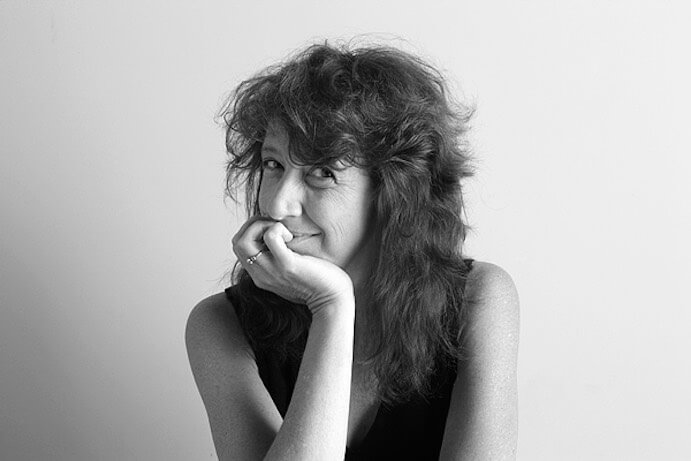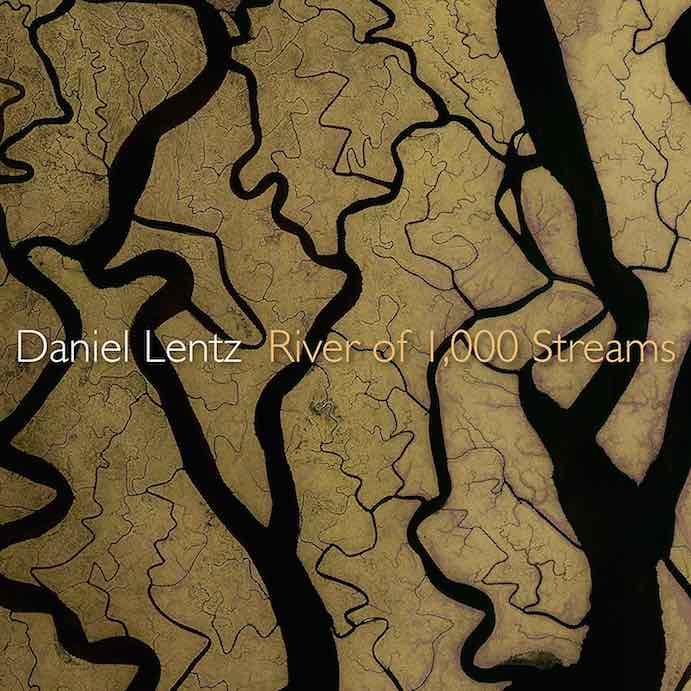Daniel Lentz’s River of 1,000 Streams for piano and electronics was completed in 2016, and recorded for release by Cold Blue Music late in 2017. The piece tends to render the distinction between the live performance and the computer-generated “cascading echoes” (snippets sampled from the solo pianist’s performance) undetectable. Clouds of harmony drift steadily higher in pitch over the twenty-nine minute duration, from the piano’s lowest register to its highest. Sustaining a near-constant tremolo demands not only technical skill from its performer–the Los Angeles luminary Vicki Ray–but also an approach to pacing and contrast that preserves grand-scale trajectory without smudging out fine moment-to-moment gradations.
As a composition, River of 1,000 Streams continues a trend nearly four decades in the making within Lentz’s work. His 1979 Point Conception for nine pianos also depicted rushing waters in the wilderness, and appeared in a 1985 Cold Blue Music recording in an overdubbed solo performance by Arlene Dunlap. Lentz’s penchant for harmonic choices remains a defining feature of his craft, as do his trademark moments of lyricism.
Yet for all its fitting into established patterns, this piece and recording reflect extraordinary achievements. From the second the piece roils into existence, Ray seems to pull Lentz’s sonorities out of the instrument by sheer magic, a harvester of sounds rather than a hammerer of keys. Over the next thirteen minutes’ worth of sonic blossoming, Lentz allows a process to unfold. Every ten to twenty seconds, an oscillating cluster of pitches edges imperceptibly to the right along the keyboard. Ray effects subtle shadings within the tremolo texture, from the turbulence of audible keystrokes to bright hazes of pure resonance. Major- and minor-inflected sonorities arise only to pass seconds later. Around three minutes in, overtones create a halo of light at the edges of this ever-shifting cloudscape.

Vicki Ray
Never one for uninterrupted processes, Lentz begins to tamper with the piece’s strict unfolding around halfway through. Out of nowhere, something catches the listener’s ear, but evaporates almost immediately. Several seconds later, Lentz repeats the gesture: a fragment of a melody. Splayed in diatonic languor across the surface of the tremolo, it sounds like something straight out of Rachmaninoff. Yet it only ever appears in fits and starts, never stated as a full theme. Lentz continues to offer glimpses of a lushness that remains contained and curtailed, breaking through at intervals as the progress of the tremolo figure continues.
At around the seventeen-minute mark, the “cascading echoes” begin to arrive in earnest. When these happen to generate a major-inflected sonority beneath the still-rising tremolo, the effect is like that of arriving on a mountaintop: the world suddenly becomes breathtakingly expansive. When the echoes carry a minor tinge, one can almost smell the ozone tang of a coming storm.
After twenty-seven minutes of vacillation, the piece settles into a major-tinged harmonic space. Something like a classical-period symphonic flourish joins the choppy sparkle of the tremolo figure. Yet one final echo drifts in, just as that tremolo rises to an earsplitting volume. When Ray abruptly cuts off, the sonority that the depressed sustain pedal leaves hanging in the air is dusky and discordant. Lentz wrote the piece after a visit to the Yellowstone River, which suffered from oil spills in 2011 and 2015. It even had to be shut down for part of the summer of 2016, amid a massive fish kill. While Lentz has never indicated a source of inspiration beyond the river itself, the piece’s gloomy ending suggests that something more than mere awe lies in his memory of the visit.
Ray merits nothing but praise for her execution of this score. To sustain a series of tremolos for thirty minutes is to test one’s endurance and technique. To shape that continuous flutter into a colorful, nuanced, arresting statement like this is to demonstrate first-rate artistry. Her rendition should eliminate any suspicions that the piano lacks the finesse to handle extended textural compositions. With a pianist like Ray at the keyboard, anything is possible. Recording engineer Scott Fraser also deserves a shout-out for his recording, editing, and mixing of this virtuosic performance. It takes rare skill to make a piano sound like an ecosystem unto itself, but between Lentz’s writing, Ray’s playing, and Fraser’s mastering, this machine of many strings becomes an elemental force, shot through with ripples and reflections.






















